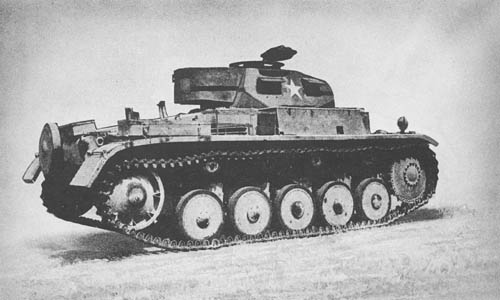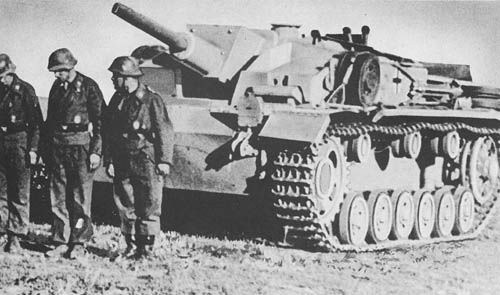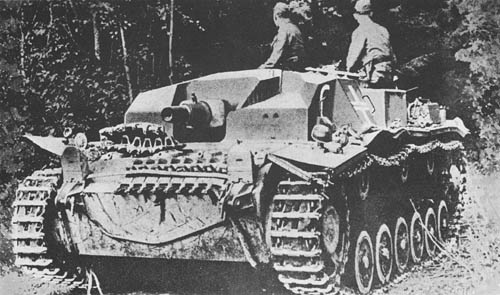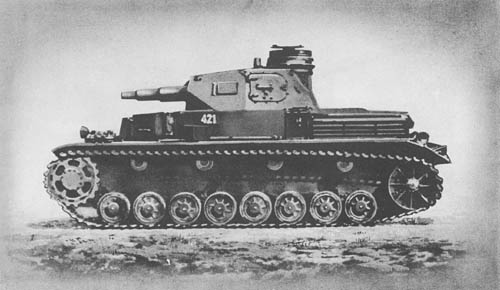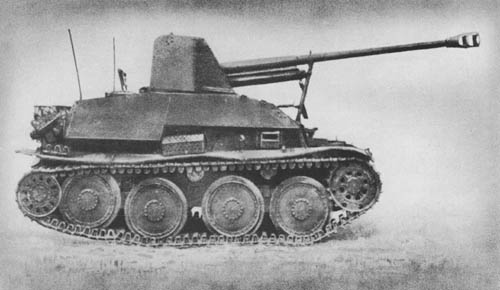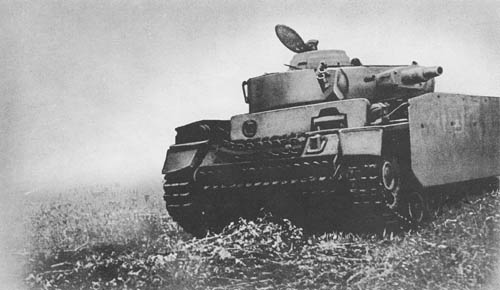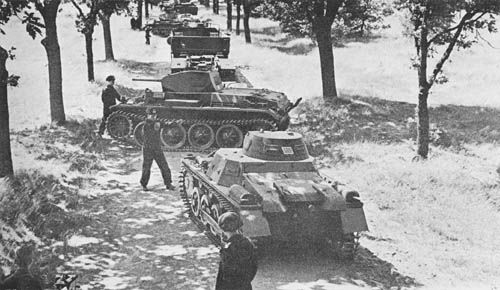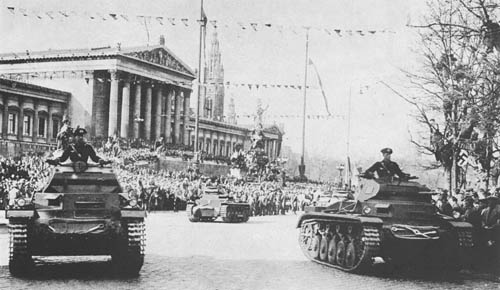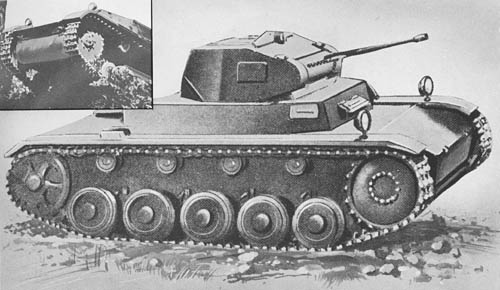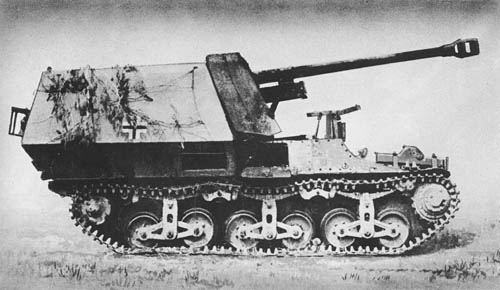
The French Lorraine tank chassis, in addition to being utilized as a self-propelled mount for the German 15 cm heavy field howitzer and the 15 cm heavy infantry gun, is also used for the high-velocity antitank gun, 7.5 cm Pak 40.
The Lorraine suspension arrangement consists of six small bogie wheels on each side, sprung in three pairs on three semi-elliptical springs. The driving sprocket is at the front, the track-adjusting idler at the rear, and four return rollers, located at the ends of the suspension springs, return the track, which is of the dry-pin type with outside center guides.
The power plant of this vehicle is the six-cylinder, in-line, water-cooled Delahaye engine rated at 70 hp. The ignition system is Bosch. Its main and reserve gasoline tanks hold 20 gallons and 5 1/2 gallons respectively.
The semi-automatic gun of monobloc construction is mounted within a high, open top, box-like shield, constructed of sloping 10 mm plate, well back on the chassis. The original gunshield overlaps the superstructure shield at the front. The gun is 134 inches in length and its muzzle with brake extends beyond the front of the chassis. The piece has the following muzzle velocities: H.E., 1800 f/s; A.P.C., 2525 f/s. Its appropriate elevation is -5° to +22°; traverse 65°. At 1000 yards, firing A.P.C. shell, it will defeat 3.6 inches of homogeneous armor at 30° obliquity, and 4.3 inches at normal.
SPECIFICATIONS
| Weight | 8 tons (approx.) | |
| Length | 17 ft. (approx.) | |
| Width | 6 ft., 2 ins. | |
| Height | 7 ft. (approx.) | |
| Ground clearance | 12 ins. | |
| Tread centers | 4 ft., 4 5/8 ins. | |
| Ground contact | 9 ft. | |
| Width of track | 10 ins. | |
| Track links | 107 (approx.) | |
| Pitch of track | 3 3/16 ins. | |
| Fording depth | ||
| Theoretical radius of action | ||
| Roads | ||
| Cross-country | ||
| Speed | ||
| Roads | 21 m.p.h. | |
| Cross-country | ||
| Armor | ||
| Front plate | 12 mm | |
| Sides | 9 mm | |
| Armament | 7.5 cm Pak 40 | |
| Ammunition | ||
| Wt. of Projectiles | ||
| A.P.C. | 15.0 lb. | |
| H.E. | 12.6 lb. | |
| Engine | Delahaye, 70 hp. | |
| Transmission | 5 speeds forward, 1 reverse | |
| Steering | Controlled differential | |
| Crew | 5 |
German: p. 15
